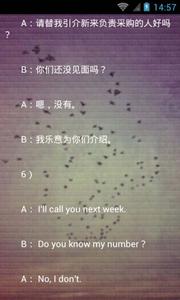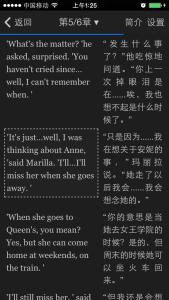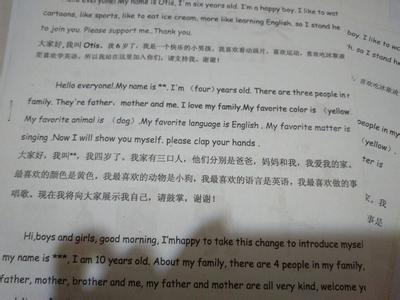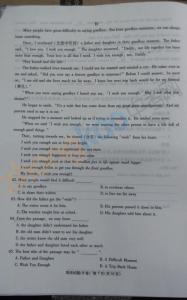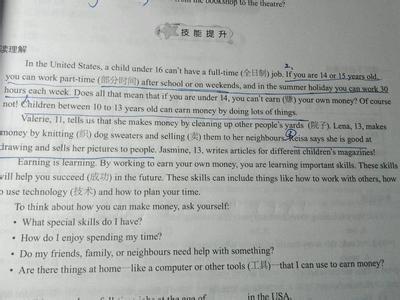因为英语的学习是为交流而准备的,于是口语表达便成为交流的主要手段。因此创设运用交际的社会情境,来锻炼学生听、说的能力,口语表达能力的培养也就越来越重要了。小编精心收集了初一英语对话小短文,供大家欣赏学习!
初一英语对话小短文篇1
A:What place are you going to show us today?
A:你今天准备带我们去游览什么地方?
B:We are going to climb the Wudangshan Mountains.
B:我们去爬武当山。
A:Oh,how wonderful!
A:噢,太好了。
B:Here we are. The Wudangshan Mountains stretch for 400 km across northwestern Hubei province. They are home to the Taoists and a number of Taoist Temples were built here.
B:我们到了。武当山沿湖北省的西北部绵延400千米。它们是道教的发源地,山上建有许多道家庙宇。
A:Oh,that's great!
A:噢,太棒了。
B:This is Tianzhu Peak,the highest summit of the mountains.
B:这是天柱峰,是武当山的最高峰。
A:What is the meaning of“Tianzhu”in Chinese?
A:“天柱”在汉语中是什么意思呢?
B:“Heavenly pillar".It means a pillar propping up the sky.
B:是天的柱子,它的意思是一根柱子直冲云霄。
A:That sounds exciting.
A:听起来真带劲。
初一英语对话小短文篇2
A:When were the Mogao caves dug?
A:莫高窟是什么时候开凿的?
B:The first cave was dug in the year 366 A. D.
B:第一个石窟是公元366年开凿的。
A:And then people continued to dig new caves here,right?
A:然后人们就继续开凿新石窟了,对吗?
B:That's right. These caves were dug over a period of more than 1 000 years through 10 dynasties.
B:是啊。这些石窟的开凿历经10个朝代,前后1000多年。
A:How many caves are there?
A:这里有多少个石窟?
B:There were already more than 1,000 caves dug by the Tang Dynasty. However, nature and human destruction have claimed a lot of them. Today,there are only 492 caves left.
B:到唐朝时已经有1000多个。然而,大自然和人为的损毁破坏了许多。今天只剩下492个。
A:It's still an astounding figure.
A:这仍然是个了不起的数字。
B:As you can see , the caves are arranged in rows,with one row on top of another, forming a five-storey massive structure in some places.
B:你们可以看到,石窟一排排地排列,一排上面又有一排,有些地方形成了5层楼高的结构。
A:What an imposing scene!
A:真是壮观!
B:Yes,I like it so much.
B:是啊,我太喜欢莫高窟了。
A:Me too.
A:我也是。
初一英语对话小短文篇3
Conversation 2
对话 2
A:The Ming Tombs are just ahead of us.
A:明十三陵就在前面了。
B:Can't we just stop a minute and take a look at these stone beasts and statues?
B:我们停一会儿,看一下这些石兽、石雕人像好吗?
A:Certainly. They're supposed to be sentries standing guard along the approach to the tombs.
A:当然可以。据说他们都是卫兵,沿路守卫这条通往明陵的道路。
B:There seem to be four of each kind.
B:看起来每一种有4个雕塑。
A:That's right.
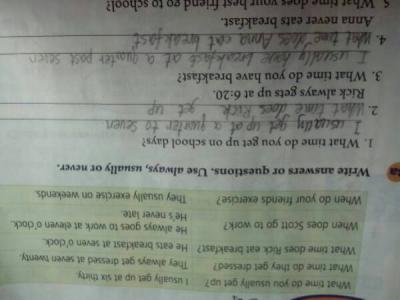
A:对了。
B:Whose tomb are we going to see?
B:我们将去看谁的陵墓?
A:We are going to see Ding Ling,the tomb of the thirteenth Ming emperor,Zhu Yijun.
A:我们将去看定陵,明代的第十三个皇帝朱诩钧之墓。
B:When was this tomb excavated?
B:这个陵墓是什么时间发掘的?
A:Work started in May 1956 and was completed the following year.
A:1956年5月工程开始,次年完成的。
B:Is this tomb the largest of all?
B:这是最大的一个吗?
A:It's difficult to say. But judging from the comparatively short time it took to complete, it must be one of the smaller ones.
A:很难说。但从完工所用这么短的时间来看,它一定是较小的一个。
B:Have you excavated all the tombs in this area?
B:你们把这一地区的陵墓都发掘了吗?
A:No,I'm afraid not. It's a very hard job.
A:恐怕还没有。这是项艰巨的工作。
 爱华网
爱华网